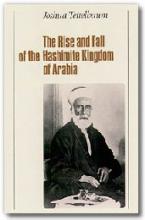
The Hashimite Kingdom of Arabia was forged in the crucible of the Arab Revolt (with which T.E. Lawrence was associated) in 1916, during the First World War. Its leader, Sharif Husayn ibn ‘Ali, who claimed descent from the Prophet, struggled to put together a tribal confederacy based on British funding and a new supra-identity, Arabism. He proclaimed himself “king of the Arab countries,” although the Allies recognized him only as king of the Hijaz. This study examines Husayn's efforts at state formation, efforts that eventually failed. The Sharif dreamed of replacing the Ottoman Empire with an Arab one that went beyond the confines of his homeland, the Hijaz, with its holy cities of Mecca and Medina. He would be the Caliph. But blinded by his ambitions, he paid little attention to the essential task of consolidating his rule at home. His nemesis, Ibn Saud, exploited Husayn's weaknesses, finally defeating him in 1925. Husayn spent most of the rest of his life in distinctly non-Arab Cyprus, until the British let him travel to Amman, to die, in 1931.







